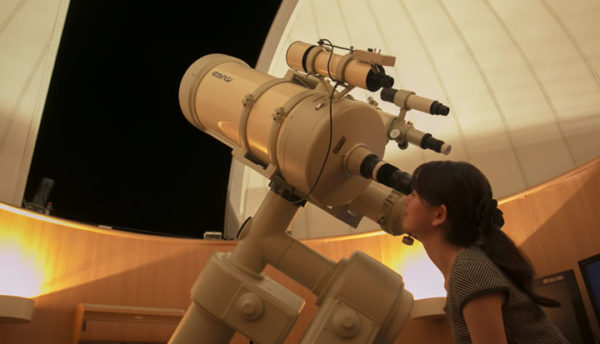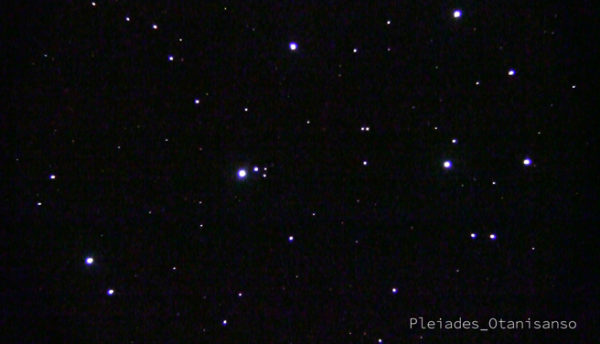- Astronomical Observatory
- 2018/11/30
[December in the Astronomical Observatory]Come See the Winter Constellations and the “Stellar Nursery” in Orion’s Belt!
The “Stellar Nursery” of the Orion Nebula. Search for the shape of a bird with its wings extended
 Hello from the Otani Sanso astronomical observatory dome.
Today we’d like to introduce you to the stars visible in Nagato’s night skies in December.
Nagato’s chilly winter is a season in which the shimmering of the stars appears closer than usual.
Following the Pleiades in November, the Stellar Nursery of the Orion Nebula in the constellation of Orion becomes visible around the 15th of December.
Depending on the condition of the skies, you may have a chance to see the stars Capella, Betelgeuse, and Rigel.
Hello from the Otani Sanso astronomical observatory dome.
Today we’d like to introduce you to the stars visible in Nagato’s night skies in December.
Nagato’s chilly winter is a season in which the shimmering of the stars appears closer than usual.
Following the Pleiades in November, the Stellar Nursery of the Orion Nebula in the constellation of Orion becomes visible around the 15th of December.
Depending on the condition of the skies, you may have a chance to see the stars Capella, Betelgeuse, and Rigel.
What is the constellation of Orion?

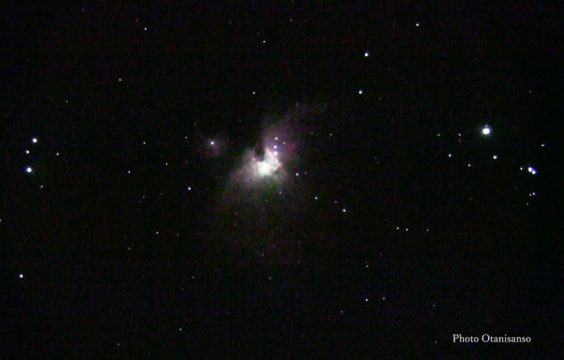 The constellation most characteristic of the winter skies is Orion. It takes its name from its resemblance to the “hero Orion” of Greek myth, brandishing a club. If you look closely to the lower left of Orion’s characteristic three stars, you can see a fuzzy, glowing area even with the naked eye.
This is the Orion Nebula. If you point a telescope at the Orion Nebula, you can see its shape, resembling a bird with outstretched wings.
The constellation most characteristic of the winter skies is Orion. It takes its name from its resemblance to the “hero Orion” of Greek myth, brandishing a club. If you look closely to the lower left of Orion’s characteristic three stars, you can see a fuzzy, glowing area even with the naked eye.
This is the Orion Nebula. If you point a telescope at the Orion Nebula, you can see its shape, resembling a bird with outstretched wings.
Why does the Orion Nebula look blurry?
Around the center of the Orion Nebula, in the bright area, four stars shimmer in a trapezoid-like formation. In the center of these four stars is a cluster of “baby stars,” just 200,000 years old. The reason the nebula looks blurry is the luminescense of the gas that surrounds it. This is the so-called “stellar nursery,” in which even now many stars are in the process of being born.Stellar Objects Expected to be Visible in December
●December 1 (Sat) – 14 (Fri)
・The Pleiades ・The Moon●December 15 (Sat) – 23 (Sun)
・The Pleiades ・The MoonDecember 24 (Mon) – 31 (Mon)●
・Pleiades ・Orion NebulaOvernight guests may use the astronomical observatory free of charge. Come and enjoy the night skies as they change throughout the seasons with a look through our telescope. We look forward to seeing you.
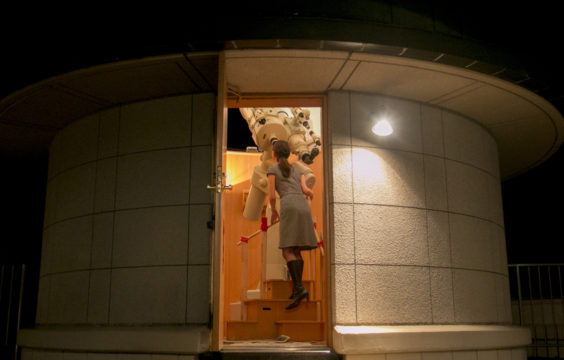
■Details
・Observatory Hours… 7:30 p.m. – 10:10 p.m. ・Closed on… Every Tuesday ・Location… Otani Sanso Roof (Just beside the gallery on the 8th floor) ・Price… Free for overnight guests (Viewings available to those who reserve first) ・Using the Observatory… Viewings are available to those who reserve first (12 seats per viewing)■Observation Times
7:30 p.m., 7:50 p.m.8:10 p.m., 8:30 p.m., 8:50 p.m.
9:10 p.m., 9:30 p.m., 9:50 p.m.
■How to Make a Reservation
Please inform us of your desired reservation time from the times listed above (Please tell us via telephone, or write it in the “requests” field) *You may not be able to participate in a viewing if a time slot is fully booked, or due to weather conditions. *Should you be unable to participate in a viewing due to weather conditions, you will be able to see a video from a past viewing.■Frequently Asked Questions "Why is there an astronomical observatory on the roof of Otani Sanso?" -------------------------------------------------- The president of Otani Sanso, a great fan of the poems of Nagato/Senzaki-born Kaneko Misuzu, built the observatory out of a desire to "share the beautiful stars of Nagato with our guests, too." In fact, it was through a chance meeting via the Kaneko Misuzu Exchange Association that the president met with Dr. Haoru Saji, who greatly affected the president with the beauty of the stars he could see from the observatory at Tamagawa University even during the daytime. "There's much more than your eyes can see," Dr. Saji told him. "Let's take a look at the daytime stars." When you look up at the starry skies of Nagato, here, surrounded by nature, we hope you'll make memories to take home with you that you can look back on fondly.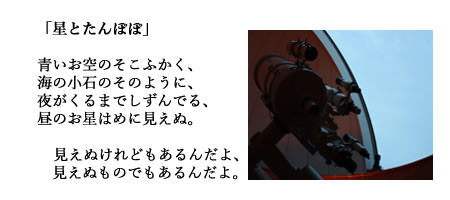
Night Sky Trivia
The Speed of Light
- Light moves at a speed of approximately 300,000 km per second (7.5 revolutions around the Earth), and can cover 9.46 trillion km in a year.
- It takes light from the sun 8 minutes and 19 seconds to reach the earth.
- It takes 8 minutes and 19 seconds for light from the sun to reach the Earth.
Distances in Space
- Because space is so vast, we use “light years” and “astronomical units (AU)” to describe the distances between stars.
- 1 light year = the amount of distance light can travel in one year (9.5 trillion km)
- 1 astronomical unit = the distance between the sun and the Earth (approx. 150 million km)
Earth Time
- There are 24 hours in one day, but it takes 23 hours and 56 minutes for a rotation of the earth, leaving a margin of 4 minutes.
- The reason we have “leap years” is because the Earth’s orbital period around the sun is just shy of 365 Earth days.
- 1 rotation of the Earth (23 hours 56 minutes) = 400 m/sec
- 1 revolution of the Earth (365 days) = 30 km/sec
